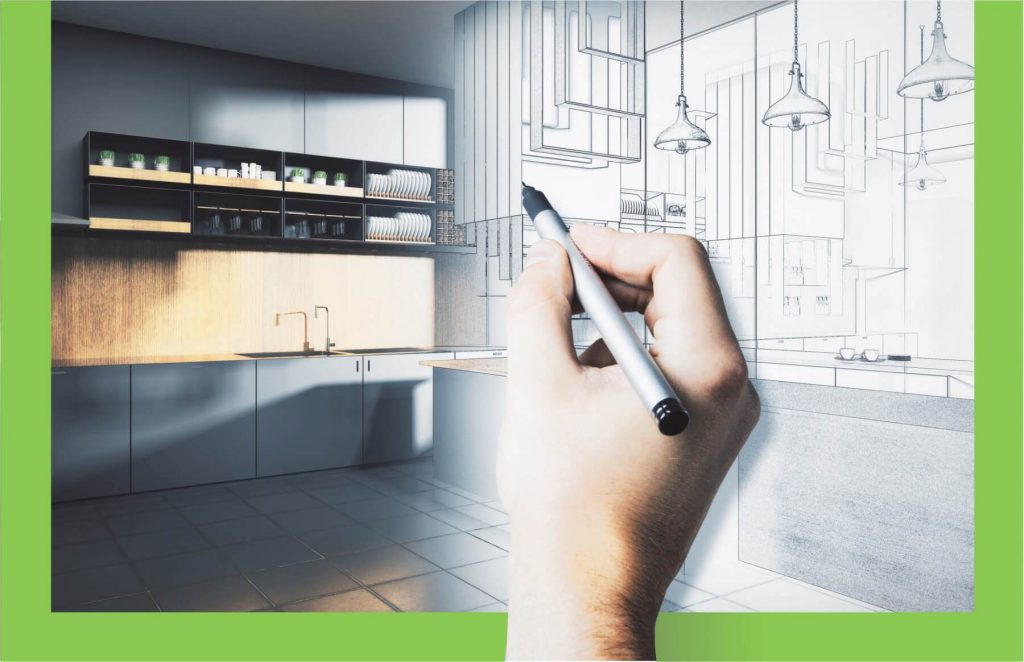
Which is better: MDF or DSP?
Very often, when we buy kitchen, office or school furniture, chest of drawers and cabinets, the question arises, what is better than MDF or DSP in the quality of this furniture.
Choose, focusing only on the appearance, it is simply unrealistic, because the finished products from these types of materials practically do not differ from each other.
And yet, the differences between them still exist.
The technological characteristics of the production of MDF and DSP.
One of the main differences between these materials can be considered raw material for their production.
As is known, chipboard is made of small chips and sawdust, mixing this mass with glue and pressing.
When this adhesive usually contains an amount of epoxy resin and formaldehyde, the evaporation of which can be harmful to human health.
In turn, MDF boards are made from fine wood chips, that is, almost from wood flour.
Gluing requires much less adhesive substance, which ultimately depends on the environmental friendliness and safety of the MDF material.
Also, the distinctive feature of MDF is its density, which almost corresponds to the density of natural wood.
Which is better: MDF or chipboard?
Operational characteristics of MDF and chipboard.
The main advantage of the chip board is strength, that is, the ability to perform significant tasks during operation.
Also, the low cost has made the manufacture of chipboard furniture popular for most furniture manufacturers.
However, it is no secret that PAL is afraid of water.
High and constant humidity in the room where furniture from this material is made will inevitably lead to the fact that chipboard begins to crumble.
And the penetration of water directly under the decoration layer (laminated film or veneer) will cause swelling and softening inside the board.
All this is detrimental to the appearance of the furniture.
MDF also has a number of features.
Furniture manufacturers have greatly appreciated its extraordinary versatility.
MDF during processing can be given any shape.
Despite the decent thickness of the plates, they can be bent, laid and drawn.
This material is not as sensitive to water and moisture as chipboard.
In addition, the indisputable advantage of MDF is its hygiene and complete immunity to various fungi.
But this material is very sensitive to temperatures above 70 degrees Celsius.
It swells, twists, loses its shape, and the decorative pockets cover and fall away.
That is why it is recommended that MDF furniture be protected from heating and not placed near a working stove, oven or other heating devices.
Thus, in order to decide what is better than MDF or DSP, it is necessary to take into account not only their quality characteristics, but also the specific operating conditions.
Like this article? Tell your friends!
Friends for this will certainly be grateful.
Choose, focusing only on the appearance, it is simply unrealistic, because the finished products from these types of materials practically do not differ from each other.
And yet, the differences between them still exist.
The technological characteristics of the production of MDF and DSP.
One of the main differences between these materials can be considered raw material for their production.
As is known, chipboard is made of small chips and sawdust, mixing this mass with glue and pressing.
When this adhesive usually contains an amount of epoxy resin and formaldehyde, the evaporation of which can be harmful to human health.
In turn, MDF boards are made from fine wood chips, that is, almost from wood flour.
Gluing requires much less adhesive substance, which ultimately depends on the environmental friendliness and safety of the MDF material.
Also, the distinctive feature of MDF is its density, which almost corresponds to the density of natural wood.
Which is better: MDF or chipboard?
Operational characteristics of MDF and chipboard.
The main advantage of the chip board is strength, that is, the ability to perform significant tasks during operation.
Also, the low cost has made the manufacture of chipboard furniture popular for most furniture manufacturers.
However, it is no secret that PAL is afraid of water.
High and constant humidity in the room where furniture from this material is made will inevitably lead to the fact that chipboard begins to crumble.
And the penetration of water directly under the decoration layer (laminated film or veneer) will cause swelling and softening inside the board.
All this is detrimental to the appearance of the furniture.
MDF also has a number of features.
Furniture manufacturers have greatly appreciated its extraordinary versatility.
MDF during processing can be given any shape.
Despite the decent thickness of the plates, they can be bent, laid and drawn.
This material is not as sensitive to water and moisture as chipboard.
In addition, the indisputable advantage of MDF is its hygiene and complete immunity to various fungi.
But this material is very sensitive to temperatures above 70 degrees Celsius.
It swells, twists, loses its shape, and the decorative pockets cover and fall away.
That is why it is recommended that MDF furniture be protected from heating and not placed near a working stove, oven or other heating devices.
Thus, in order to decide what is better than MDF or DSP, it is necessary to take into account not only their quality characteristics, but also the specific operating conditions.
Like this article? Tell your friends!
Friends for this will certainly be grateful.
